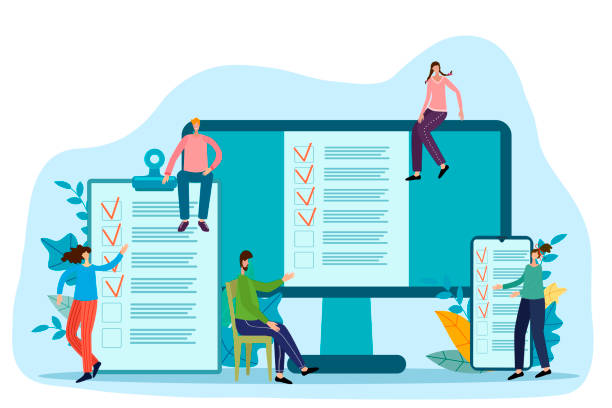Introduction to Fast Website Design and Its Importance in the Digital Age
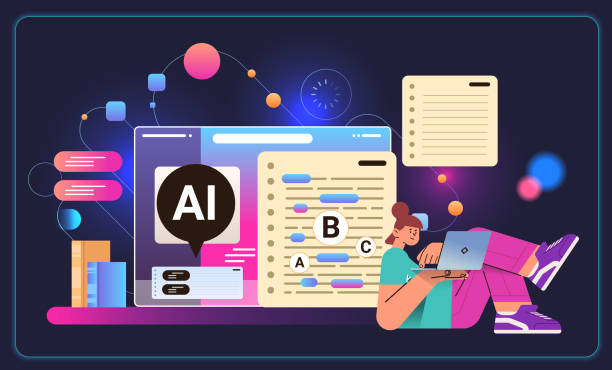
In today’s world where speed is paramount, fast website design has become more important than ever.
Internet users have high expectations for websites, and even a few milliseconds of delay in page loading can mean losing a visitor.
The importance of #site_speed is not limited to user experience; #SEO and search engine rankings are also heavily influenced by loading speed.
Slow websites have a higher Bounce Rate, which indicates user dissatisfaction and early site abandonment.
This issue directly affects your #conversion_rate and business goals.
Studies have shown that every second of page load delay can lead to a 7% reduction in conversions and an 11% reduction in page views.
Therefore, for any business that wants to succeed online, investing in website speed optimization is a crucial step.
This section explains the fundamental importance of this topic and will serve as a basis for subsequent, more specialized discussions.
Achieving a high-speed website requires a combination of technical strategies and smart choices in the web design stages, which will be discussed in detail below.
Does your company’s website perform as befits your brand? In today’s competitive world, your website is your most important online tool. Rasaweb, specializing in professional corporate website design, helps you to:
✅ Build customer credibility and trust
✅ Convert website visitors into customers
⚡ Get a free consultation!
Key Factors Affecting Site Speed

To achieve fast website design, identifying and optimizing key factors affecting speed is essential.
These factors encompass a wide range of technical aspects of a website, each of which can significantly impact loading time.
The most important of these factors include optimizing #frontend_codes (HTML, CSS, JavaScript), optimizing #images and media, choosing appropriate #hosting, correct use of #caching, and also database structure and size.
Unorganized and bulky codes, high-resolution and uncompressed images, weak or distant servers, lack of proper caching, and numerous database requests can all lead to website slowdowns.
A comprehensive approach to these factors is the cornerstone of any successful website speed enhancement strategy.
Furthermore, using unnecessary and superfluous plugins and scripts can significantly reduce site speed.
This section specifically explains these factors and provides practical guidance for diagnosing and resolving issues, enabling you to take effective steps towards accelerating your website’s loading speed.
Understanding these factors helps you to have a comprehensive view of your site’s performance and identify potential weaknesses.
Optimizing Images and Media for Speed Increase
![]()
Images and media files typically constitute the largest portion of a web page’s size and can severely impact site loading speed.
For fast website design, optimizing these elements is a crucial and practical step.
The first step is #image_compression without noticeable quality loss.
Many online and offline tools are available for this purpose, which can significantly reduce file sizes.
Besides compression, choosing the #appropriate_image_format is also important.
For photos, JPEG, and for graphics and icons, PNG or SVG are suitable options.
Newer formats like WebP can further reduce size and are supported by modern browsers.
Lazy Loading is another effective technique; this method ensures images are loaded only when the user scrolls to the relevant section of the page, not immediately upon page entry.
Also, ensuring correct image dimensions in HTML and CSS helps the browser reserve the necessary space for the image and prevents layout shifts.
Video optimization also includes using efficient codecs and external hosting like YouTube or Vimeo to reduce the load on your own server.
These measures, along with the following, can dramatically improve user experience.
| Format | Ideal Use Cases | Features | Compression Level |
|---|---|---|---|
| JPEG | Photos, images with many colors | Wide support, quality loss in compression | High |
| PNG | Logos, icons, images with transparency | Quality preservation, transparency support | Medium |
| SVG | Vector graphics, logos, icons | Scalable without quality loss, small file size | High (for vector) |
| WebP | General photos and images | Excellent compression, transparency support, developed by Google | Very High |
The Role of Hosting and Server in Fast Website Design

Choosing the right #hosting and server is one of the most important decisions in the process of fast website design.
Even if your site’s coding is flawless and images are optimized, a weak host can negate all your efforts.
Server speed, allocated resources (CPU, RAM), bandwidth, and physical server location all affect #server_response_time and consequently the overall site speed.
Hosting types such as #shared_hosting, #VPS, #dedicated_server, and #cloud_hosting each have their specific advantages and disadvantages.
Shared hosting is the cheapest option, but its resources are shared with other sites, which can cause slowdowns during peak traffic.
In contrast, dedicated or cloud hosting provides more resources and is more suitable for high-traffic or complex websites.
Using a #Content_Delivery_Network (CDN) can also significantly increase loading speed.
A CDN copies your website’s static content to multiple servers worldwide, thereby delivering content from the closest server to the end-user, which reduces latency.
This section specifically explains different types of hosting and their impact on website speed optimization, offering guidance for choosing the best option so your site benefits from a stronger infrastructure.
Are you tired of your e-commerce website not generating as much revenue as its potential? Rasaweb, specializing in professional e-commerce website design, solves this problem forever!
✅ Increase sales rate and revenue
✅ High loading speed and exceptional user experience
⚡ Get a free consultation for e-commerce website design
Using Caching and Compression for Better Performance
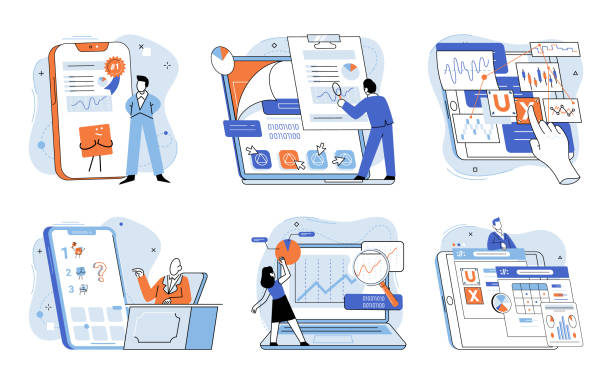
One of the most effective solutions in fast website design is the correct implementation of #caching and #compression mechanisms.
#Caching means temporarily storing data so that it doesn’t need to be reloaded from the server on subsequent visits.
This process can be done both on the user’s browser side (Browser Caching) and on the server side (Server Caching).
Browser caching ensures that static files like CSS, JavaScript, and images are stored on the user’s system after the first visit, leading to faster page loading on subsequent visits.
Server caching can include Database Caching, Object Caching, and Page Caching, all of which help reduce server load and increase response speed.
Tools like Redis or Memcached are very useful for server-side caching.
Alongside caching, #content_compression also plays a vital role.
Using protocols like #Gzip or #Brotli ensures that text files (HTML, CSS, JS) are compressed before being sent to the user’s browser.
This significantly reduces the amount of data transferred and, consequently, speeds up loading time.
Correct configuration of these items is a specialized task requiring precision, but its results in increasing website speed are very significant.
This section provides guidance for implementing these techniques and explains their benefits for improving your site’s performance.
Clean and Optimized Coding: The Cornerstone of Fast Website Design
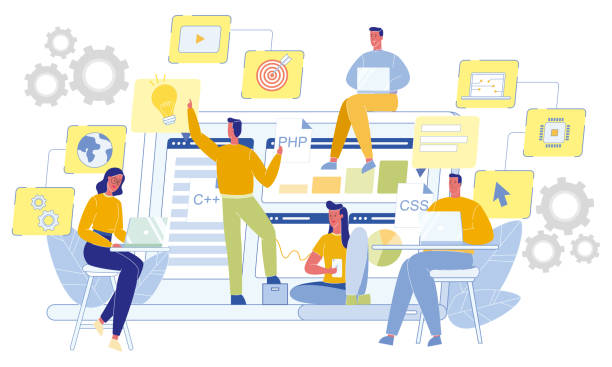
The foundation of fast website design is #clean_and_optimized_coding.
Disorganized, repetitive, or unnecessary codes can significantly reduce page loading speed.
In this regard, #JavaScript_and_CSS_optimization are of particular importance.
#Minification of CSS and JavaScript files means removing whitespace, comments, and extra characters, which reduces file size without affecting their functionality.
Additionally, #Concatenation of small CSS and JS files into a larger one can reduce the number of HTTP requests to the server, which in turn helps speed up loading.
Avoiding Render-Blocking Resources is also very important; scripts and styles placed in the <head> section of the page can prevent the main page content from rendering.
Placing JavaScript at the end of the page (before the closing </body> tag) and using `async` or `defer` attributes for asynchronous script loading can solve this problem.
For CSS, using `media` queries and loading only the styles needed for initial display (critical CSS) helps improve rendering time.
This section specifically addresses coding aspects and provides useful guidance for writing codes that significantly contribute to improving your site’s performance.
An optimized codebase not only improves speed but also makes future maintenance and development of the website easier.
Tools and Techniques for Measuring Site Speed

To properly advance in the path of fast website design, you need tools for #measuring and #analyzing_site_speed.
Without accurate data, optimizations will be guesswork.
Fortunately, powerful tools exist for this purpose, providing you with comprehensive and reliable information.
#Google_PageSpeed_Insights is one of the most popular tools, not only providing a speed score for desktop and mobile but also offering specific recommendations for improving your site’s performance.
#GTmetrix is another tool that gives you a performance grade and detailed information about loading time, page size, and number of requests, including metrics like YSlow and PageSpeed Score.
#Lighthouse, also available in the Chrome browser, is a comprehensive website auditing tool that evaluates performance, accessibility, best development practices, SEO, and Progressive Web App (PWA) readiness.
#WebPageTest (WPT) is also an advanced tool that allows speed testing from various geographical locations and with different browsers, providing extensive details including a Waterfall Chart for more precise analysis.
These tools help you identify speed bottlenecks and take necessary actions for improving your website’s speed in an analytical and data-driven manner.
This section guides you on how to use these tools to diagnose problems and evaluate the impact of your optimizations.
| Tool | Capabilities | Detail Level | Special Features |
|---|---|---|---|
| Google PageSpeed Insights | Performance score (mobile/desktop), optimization suggestions | Medium | Focus on Core Web Vitals, integration with Google SEO |
| GTmetrix | YSlow and PageSpeed scores, Waterfall Chart, Video Capture | High | Comprehensive and visual reports, ability to test from different locations |
| Lighthouse | Performance, accessibility, best practices, SEO, PWA | High | Built-in Chrome browser tool, comprehensive and multi-purpose |
| WebPageTest | Test from different locations, different browsers, Video Capture, Waterfall Chart | Very High | Deep technical details, advanced test configuration options |
The Impact of Themes and Plugins on Site Loading Speed
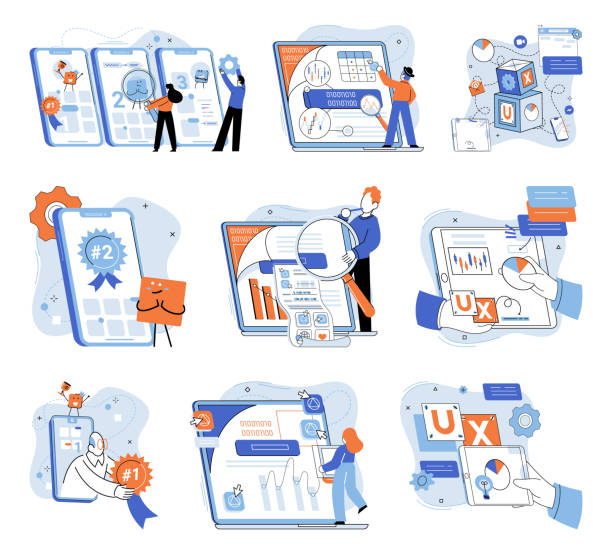
In the process of fast website design, choosing the right #theme and #plugins can have a significant impact.
Many content management systems, such as WordPress, are very popular due to their flexibility and the availability of thousands of themes and plugins.
However, this very flexibility can be the Achilles’ heel of speed.
Heavy themes with many features and extra codes, as well as low-quality or unnecessary plugins, can easily increase your site’s loading time.
An optimized and lightweight theme provides the foundation for a high-speed website.
When choosing a theme, look for options that are specifically optimized for #speed and #performance.
Regarding plugins, only install those you truly need, and always check user reviews and ratings before installation.
Using #caching, #image_compression, and #database_optimization plugins are among the useful plugins for improving speed.
But even these plugins must be chosen carefully, and installing too many of them that have similar functionalities should be avoided.
This section provides practical and specialized guidance on how to choose suitable themes and plugins to prevent website overload and help maintain your website optimization.
Is your current e-commerce website not generating the expected sales for you?
Rasaweb is an expert in professional e-commerce website design!
✅ An attractive and user-friendly site aimed at increasing sales
✅ High speed and security for an ideal shopping experience⚡ Get a free consultation for online store design with Rasaweb!
Security and Maintenance Tips for Sustaining Speed and Stable Performance
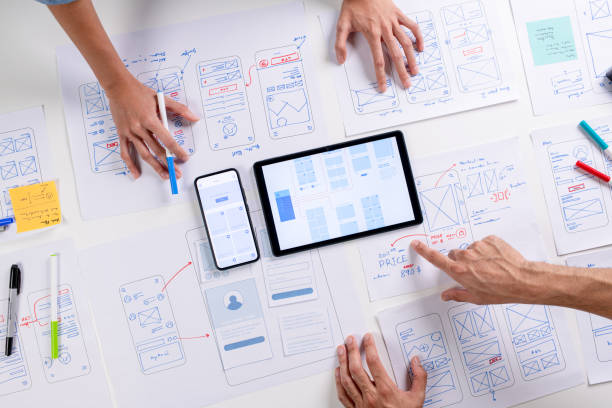
After achieving a fast website design, maintaining this speed and stable performance requires adhering to regular #security and #maintenance tips.
Site security not only protects your and your users’ data but also prevents speed drops due to cyberattacks or malware infections.
#Regular_updates of the Content Management System (CMS) core, themes, and plugins are the first step in maintaining security and performance.
These updates usually include security enhancements and performance optimizations.
Using an #SSL_certificate (HTTPS) is not only essential for security but also helps improve speed (due to HTTP/2 usage) and SEO.
Regular website backups are useful both for data recovery in emergencies and for #database_optimization.
Databases can become cluttered with unnecessary and unused data over time, which leads to site slowdowns.
Periodic database optimization by removing extra data and sorting tables improves its speed.
Monitoring server logs to identify errors or suspicious activities is also of high importance.
This section explains the importance of these tips and provides practical guidance for maintaining #stable_site_speed and security.
A fast but insecure site is at great risk and can render all your efforts for website design and development fruitless.
The Future of Fast Website Design and Emerging Trends

The web world is rapidly evolving, and the future of #fast_website_design is no exception.
Emerging trends and new technologies are constantly taking shape, promising to further improve user experience and website performance.
One of the most important of these trends is Google’s emphasis on #Core_Web_Vitals, which includes a set of metrics related to speed, interactivity, and visual stability, and has become a crucial factor in SEO ranking.
#Progressive_Web_Apps (PWA), which offer a combination of the best features of web and mobile applications, provide a very fast and seamless user experience with capabilities such as offline operation and installation on the home screen.
#AMP (Accelerated Mobile Pages) is another approach for ultra-fast page loading on mobile, which optimizes static content.
The emergence of #Artificial_Intelligence (AI) and #Machine_Learning in optimizing website performance is also increasing; from automated image optimization to intelligent cache management.
Does fast website design mean overlooking beautiful and attractive design? This is a thought-provoking question that needs to be answered.
The future shows that both can be achieved simultaneously.
With the advancement of #Web3 and #blockchain technologies, it is also expected that website architectures will undergo changes that could affect content delivery and speed.
This news and analytical section examines these trends and provides a perspective on what the future holds for website acceleration.
Frequently Asked Questions
| Question | Answer |
|---|---|
| What is fast website design? | A process for building a website that loads quickly and provides a smooth, optimized user experience. |
| Why is site speed important? | Increased user satisfaction, improved search engine ranking (SEO), reduced bounce rate, and increased conversion rate. |
| What factors affect site speed? | Page size, number of HTTP requests, image optimization, JavaScript and CSS codes, server speed, and use of caching. |
| How can site speed be measured? | Using tools like Google PageSpeed Insights, GTmetrix, Pingdom Tools. |
| How can site speed be increased? | Optimizing images, compressing files (CSS, JS, HTML), browser caching, reducing redirects, choosing suitable hosting. |
| Does fast website design mean low quality? | No, fast design means designing with a focus on speed and efficiency optimization, not reducing design or content quality. |
| What is the role of hosting in site speed? | The speed and quality of the hosting server directly impact the site’s response time and consequently the loading speed. |
| How can images be optimized for speed? | Using appropriate formats (like WebP), compressing images without significant quality loss, specifying exact dimensions for images. |
| Can complex websites also be fast? | Yes, by using appropriate architecture, optimizing codes, and managing resources, even complex websites can have high speed. |
| Is fast website design the same as Agile development? | No, fast website design focuses on the end result (a fast site), while Agile development is a methodology for project management and software development. |
And other services of Rasaweb Advertising Agency in the field of advertising
Smart Direct Marketing: An effective tool for analyzing customer behavior with the help of intelligent data analysis.
Smart Digital Advertising: An effective tool for digital branding with the help of user experience customization.
Smart Digital Advertising: Professional optimization for campaign management using proprietary programming.
Smart Customer Journey Map: A combination of creativity and technology for campaign management through proprietary programming.
Smart Marketing Automation: A dedicated service for increasing website traffic growth based on intelligent data analysis.
And over a hundred other services in the field of internet advertising, advertising consultation, and organizational solutions
Internet Advertising | Advertising Strategy | Advertorial
Resources
Secrets of Fast Website Design
Web Performance Optimization
Increase Site Speed
Optimized Website Design
? Are you ready to take your business to new heights in the digital world? Rasaweb Afarin Digital Marketing Agency, with years of experience and a specialized team, offers comprehensive and results-driven solutions for your brand’s growth and visibility. From responsive website design and SEO to social media management and targeted advertising campaigns, we are with you every step of the way to turn your digital dreams into reality. With Rasaweb Afarin, the bright future of your business begins today.
📍 Tehran, Mirdamad Street, next to the Central Bank, South Kazeroon Alley, Ramin Alley, P.O. Box 6

